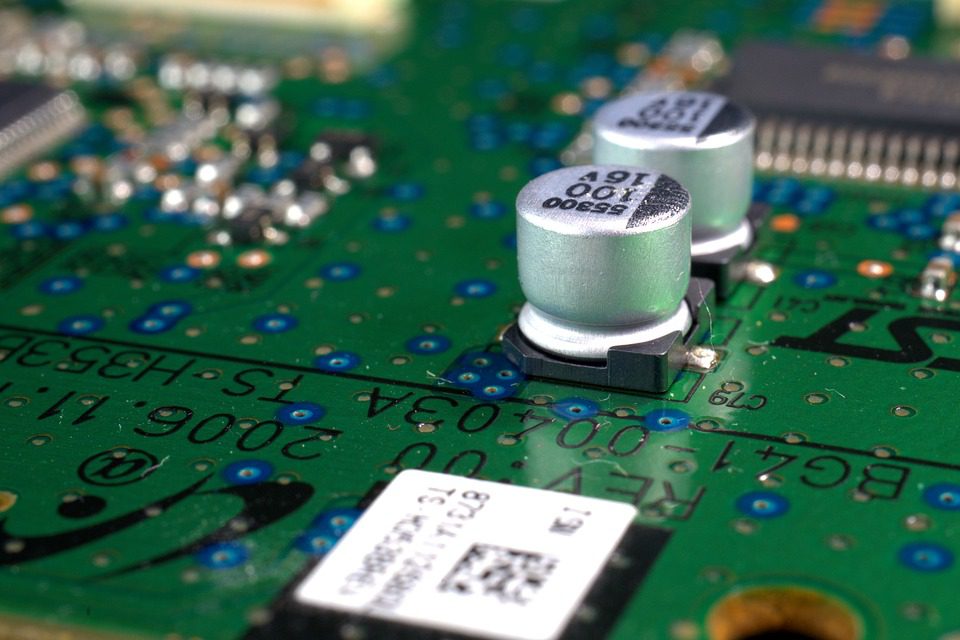When it comes to printed circuit boards, you can opt for a metal core PCB (like aluminum PCBs) or use the standard FR4 board. While industries like LED prefer the former, there’s nothing wrong with choosing the FR4 type as your go-to PCB. In fact, if you’ve been using them in your manufacturing processes, you’ll probably want to stick with them for the foreseeable future. With that said, understanding the distinction between metal core printed circuit boards and FR4 boards can work in your favor.

(Pixabay / webandi)
Let’s take a look at the key differences between these two types of boards.
Thermal conductivity
Most electronic devices require boards that are efficient at dissipating heat. Metal core PCBs do this well as they’re specifically configured to enhance the reliability of functions that operate at higher than standard temperatures. Also, they’re equipped with thermal conductivity “dielectric” materials, which act as a heat-wicking bridge from the components to the plate, allowing heat to conduct via the core to the heat sink. In case of FR4 boards, a topical heat sink has to be added to move heat through the board in order to avoid potentially harmful hotspots.
Surface-mounted components
Metal core PCBs work best when manufacturers use surface-mounted components. In contrast to the FR4 board’s bottom layer, the layer structure of the metal core PCB’s bottom is a thick metal that doesn’t work well with plated through holes. PCBs that are set up on FR4 substrates need to utilize a closely-spaced pattern via every component to transmit temperature. With metal PCBs, this is done by the material itself. The metal is more efficient at delivering thermal relief, meaning that most metal PCBs just need a couple of mounting holes rather than continuous drilling. As a result, the fabricator can move metal PCBs faster than FR4 boards in a bottleneck operation inside a printed circuit board facility.
Board space
Metal core PCB makers are known to place a die or microchip in direct contact with the core of the metal to dissipate heat. This involves using wire bonding to electrically interconnect the circuit board’s various traces, which enables manufacturers to use them as a replacement for heat sinks. Not only does this reduce the board space required, but it also makes mounting of things like power transistors much easier. The existence of metal substrate enables removal of rubber, mica, and grease insulators beneath the power devices by directly mounting them on the substrate. Overall, the removal of insulated hardware frees up board space while enhancing heat transfer.
Electromagnetic shielding
Continuing the comparison between metal core and FR4 PCBs, the former can provide you with better electromagnetic shielding, enhanced capacitive coupling, and greater power density. Although manufacturers don’t have to utilize thermal vias for prototypes, they’re sometimes used to achieve better thermal performance. Also, engineers may opt for copper PCBs in instances where they need to house high wattage electronics in tight-spaced enclosures. Copper PCB makers may also remove dielectric material to attach the electrical component’s chip with the exposed metal base. The direct path further improves heat performance by minimizing thermal resistance to a significant extent.
PCB Thickness
This is where FR4 boards outdo metal core PCBs. FR4 has a good range of PCB thicknesses available using various layer counts and metal combinations. Metal core PCBs, on the other hand, have a limited thickness range that includes dielectric sheet thicknesses and backing plate thicknesses. Why? Because the metal backing plate housed on the metal PCB’s bottom is the thickest element in the entire structure. It comes in a 3.2mm, a 1.5mm and a 1.0mm thickness because these three are the easiest to purchase. The metal layer makes the circuit flat, inserts rigidity, and achieves enough thickness so that the metal core PCB can utilize mounting hardware that’s similar to what is used for standard thickness PCBs. The metal plate part of the PCB doesn’t receive any other solder mask or surface finish.
The Manufacturing Process
A few processing considerations go into the manufacturing of metal core PCBs, but as long as the maker knows how the materials work and keeps the design to “SMT-only, single-layer” type, manufacturing the board won’t be much different from manufacturing other single-layer PCBs. If a single layer isn’t achievable, common configurations include PTH, 2-layer boards with metal on the inside or 2 layer boards built following standard PCB processes with dielectric material instead of FR4 PCB. A metal backing plate can be added at the bottom for heat transfer. Metal core PCBs with this design are an excellent choice where cooling of electrical components is a priority. No wonder they’re becoming common in a range of lighting applications in vehicles, homes and workplaces.
Conclusion
As you can see, there are a variety of differences between metal core and FR4 printed circuit boards, and the ultimate choice will depend on your personal application needs. FR4 boards should work well if you’re looking to stay flexible with PCB thickness, while metal PCBs would be a better choice for electromagnetic shielding and reducing board space. Note that metal core PCBs are available as multi-layer, double-sided, single-layer chip-on, double-layer, and single-layer PCBs.
